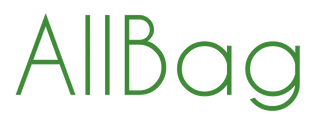Screen printing - what is it?
In the previous post, we took a closer look at a method of printing directly on clothing called DTG. It's time to learn more about the oldest printing method - screen printing . At the very beginning, it is worth explaining where this name comes from. The answer is very simple, it directly concerns the elements necessary to print with this method, i.e.: screen and mesh. Screen printing has been one of the most popular printing methods for many years. Why is screen printing so popular? What does the printing process look like with this method? What are the advantages and disadvantages of screen printing? You will find the answer to all these questions later in the article.
What is screen printing? What does the printing process with this technique look like?
Screen printing is the process of transferring a selected pattern to a flat surface using a screen mesh, paint and a squeegee. The most important role during this process is played by the screen, which allows for the transfer of any pattern to the printing material. The printing screen has small holes that allow the paint to pass through precisely, which directly affects the high degree of color reproduction. The screen printing process consists of several stages, let's take a closer look at each of them
Stage 1 Creating the pattern
After receiving the design, the printer prints it on transparent acetate foil. This is a necessary step to create a template.
Stage 2 Preparing the sieve
The printer assesses the complexity of the pattern and selects an appropriate matrix. The texture of the material to be printed is also taken into account. The mesh is then covered with a layer of emulsion which hardens under the influence of light.
Stage 3 Exposure of the emulsion
Light hardens the applied emulsion. Parts that are covered with a pattern remain in liquid form. If the final design is to contain more than one color, a separate matrix is used for each of them. Creating a multi-color print requires extraordinary precision from the printer. It involves matching templates with a specific color to achieve the expected effect without additional spaces.
Stage 4 Creating a stencil by washing off the emulsion.
After exposing the matrix for a certain period of time, areas not covered with the pattern become hard. The remaining part of the emulsion that has not hardened is carefully rinsed off. This leaves a clear impression through which the ink passes
Stage 5 Drying
The screen is then dried, and then the printer makes the necessary corrections to make the print as accurate as possible. The template is now ready to use.
Stage 6 Preparation for printing
The screen is placed on the printing press. The selected material for printing is placed flat on the space of the machine intended for printing.
Stage 7 Applying ink
The screen is lowered down onto the printing machine. Ink is placed in the upper part of the screen and then, using a squeegee, it is spread over the entire length of the screen.
In this way, the paint penetrates the empty areas of the stencil and imprints the pattern on it  product.
product.
When the appropriate number of items have been printed, the emulsion is removed from the template using a special liquid. This allows the screen to be reused to create new templates
Stage 8 Inspection and drying
The printed product then passes through a dryer, which hardens the ink and smoothes the print surface. At the end of the process, each product is carefully checked for correctness with the design.
Advantages and disadvantages of screen printing
The main advantage of printing with this method is the durability of the printed graphics. The print also looks very aesthetic, with a smooth and shiny surface. The use of this method is extremely profitable for large expenditures. This is the most frequently chosen method when purchasing paper or cotton advertising bags. Screen printing is also a very universal method. It is possible to print not only on flat but also cylindrical surfaces.
However, the main disadvantage of screen printing is low efficiency. The method is extremely time-consuming, but allows you to achieve amazing results. Another disadvantage of screen printing is the black showing through when we choose a white print on a dark surface. To solve this problem, just choose a higher grammage product. In the case of fabric bags , a sufficient grammage is 220g/m2. However, when it comes to paper bags, the problem of puncture is very rare. The last disadvantage is low profitability at low costs. This involves paying for the preparation of the printing matrix for each color separately.
To sum up, screen printing has many advantages that make it the printing technique most often chosen by customers.
In the next post you will learn more about the printing called sublimation. However, if you are interested in what the DTG printing process looks like, please refer to the previous post .

